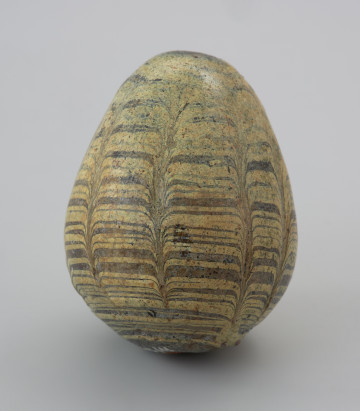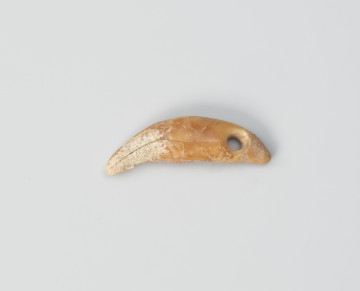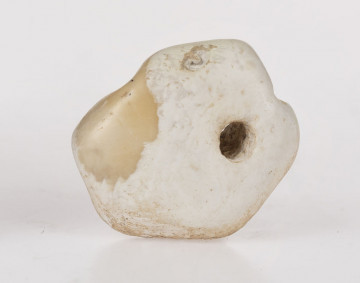
Rattle - Easter egg
National Museum in Szczecin
Part of the collection: Middle Ages
Clay egg-shaped rattles, covered with coloured glaze, belong to archaeological finds associated with the sphere of the sacrum. They are mainly found in cemeteries, in skeletal burials of women, men and children, together with other objects considered valuable or prestigious, such as elements of armament and jewellery. They are most often considered to be the products of glass-making workshops operating in Kievan Rus, where glazed ceramic tiles were produced. Easter eggs are sometimes considered to be their by-products. The presence of clay Easter eggs and eggshells in early medieval graves is associated with a deeply rooted belief in the rebirth of life. Since prehistoric times, an egg has been regarded as a symbol of renewed life and even as the beginning of the universe in many traditions and cultures. The egg plays an essential role in native folk traditions and rituals. It is a symbol of fertility and health. When placed under the threshold or at the doorsteps of houses as burnt offerings, eggshells were supposed to ensure their inhabitants' good fortune, happiness, and health. It was believed that an egg rolled over a sick person's body would take over their illness and contribute to healing. The cemetery in Cedynia, where the clay Easter egg comes from, was part of an extensive settlement complex with a castle and open settlements. Excavations began in 1957 and continued intermittently until 1985. In total, nearly 1600 burials were discovered, mainly skeletal ones, including 272 dated to the 10th-12th century.
Anna Bogumiła Kowalska
Author / creator
Dimensions
cały obiekt: height: 5.2 cm, width: 3.8 cm
Object type
cult object
Technique
glaze-coating, modelling, hand made, individual
Material
glazed clay
Origin / acquisition method
field research
Creation / finding place
Owner
Muzeum Narodowe w Szczecinie
Identification number
Location / status

National Museum in Szczecin

951 — 1050
National Museum in Szczecin

National Museum in Lublin
DISCOVER this TOPIC
Museum of King Jan III's Palace at Wilanów
DISCOVER this PATH
Educational path